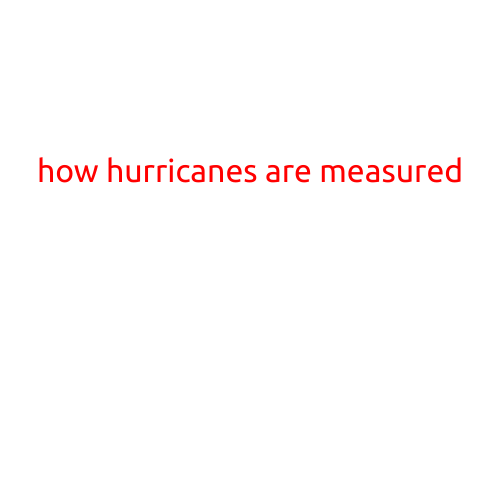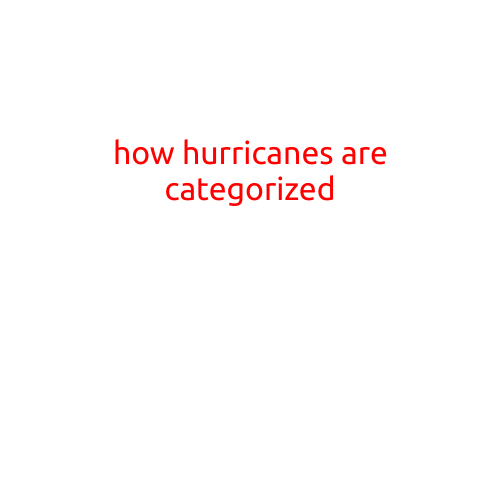
How Hurricanes are Measured
Hurricanes are powerful storm systems that can bring devastation to coastal communities and disrupt daily life. Understanding how hurricanes are measured is crucial for predicting their impact and preparing for their arrival. In this article, we will delve into the process of measuring hurricanes and explore the different methods used to determine their strength, size, and trajectory.
Measuring Wind Speed: The Saffir-Simpson Hurricane Wind Scale
The Saffir-Simpson Hurricane Wind Scale is a widely used system that categorizes hurricanes based on their wind speed. The scale ranges from Category 1 (winds of 74-95 mph) to Category 5 (winds of 157 mph or higher). The scale is divided into three main groups:
- Category 1: Winds of 74-95 mph, minimal damage to buildings, and some damage to trees and power lines.
- Category 2: Winds of 96-110 mph, some roofing material, door, and window damage to buildings, and moderate damage to trees and power lines.
- Category 3: Winds of 111-129 mph, some structural damage to large buildings, and small buildings may be pushed over or destroyed.
- Category 4: Winds of 130-156 mph, extensive damage to small buildings, and low-lying roads inland may be flooded.
- Category 5: Winds of 157 mph or higher, catastrophic damage will occur, and a high percentage of framed homes will be destroyed, with total roof failure and wall collapse.
Measuring Central Pressure: The Storm Surge
In addition to wind speed, hurricanes are also measured by their central pressure. The lower the pressure, the stronger the storm. The National Hurricane Center (NHC) uses a system known as the Atmospheric Pressure Reduced to Sea Level (APRSL) to measure central pressure.
- APRSL: The APRSL is a formula that takes into account the sea level pressure and the height of the eye of the storm above sea level.
- Storm Surge: The storm surge is the rise in sea level due to the storm, which can cause flooding and erosion.
Measuring Size: The Hurricane’s Diameter
Hurricanes come in a range of sizes, from small, compact storms to massive, long-lived systems. The diameter of a hurricane is measured by the distance from the center of the storm to the point where the winds drop below 39 mph. The diameter of a hurricane can range from a few miles to over 100 miles.
Measuring Trajectory: The Storm’s Motion
Finally, the trajectory of a hurricane is measured by its motion, including its speed, direction, and interaction with other weather systems. The NHC uses computer models to forecast the trajectory of a hurricane, taking into account factors such as wind direction, atmospheric pressure, and sea surface temperature.
Conclusion
Measuring hurricanes is a complex process that requires accurate data collection and analysis. Wind speed, central pressure, storm surge, diameter, and trajectory are all important factors in determining the impact of a hurricane. By understanding how hurricanes are measured, we can better prepare for their arrival, respond quickly and effectively, and reduce the loss of life and property.
Sources:
- National Hurricane Center (NHC)
- National Weather Service (NWS)
- The Saffir-Simpson Hurricane Wind Scale
Image Credits:
- NASA
- National Oceanic and Atmospheric Administration (NOAA)





